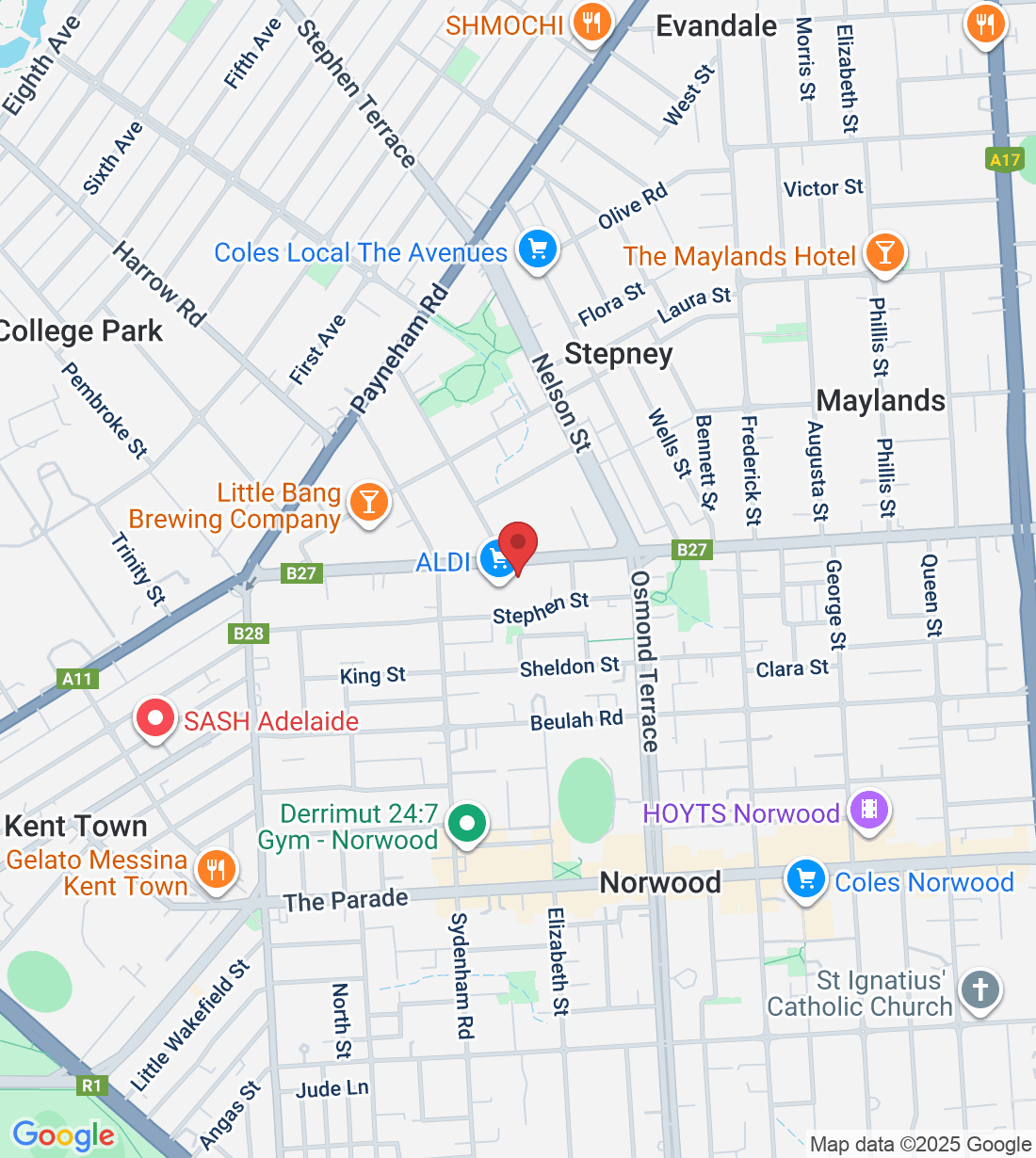
Pelvic Pain - the silent epidemic
By Pelvic health physio Danae
As many as 1 in 5 Australian women, and 1 in 12 men will have pelvic pain in their lifetime. And yet, there is still an overwhelming sense of secrecy, embarrassment or misinformation for people seeking help.
Pelvic pain can be acute or persistent, and can present differently in each individual. Causes are often multi-factorial, but can include:
Gynaecological (endometriosis, adenomyosis, ovarian cysts, menstrual pain)
Urological (urinary tract infections (UTI) or interstitial cystitis, bladder tumours, prostate issues)
Gastrointestinal (constipation, colitis, diverticular or inflammatory bowel disease)
Musculoskeletal (pelvic girdle pain, coccydinia, lumbosacral pathology, pelvic floor muscle spasm)
Patients often present to their physio with a longstanding history of symptoms that may be episodic or cyclic, and worsening as they search for answers. Common complaints include pain with or after activity, sport or intercourse (dyspareunia), bladder or bowel dysfunction, menstrual pain (dysmenorrhoea), erectile dysfunction, abdominal tenderness, pelvic tenderness, and pelvic floor issues.
Almost always there is a significant impact on quality of life. Those experiencing pelvic pain symptoms often admit to feeling “broken”, “not normal”, and confused as to what is causing their pain.
Although the evidence is still emerging, we do know that the best approach to treatment is a patient-centred method. Understanding their history, how this pain is impacting their lives, and establishing a number of strategies to restore their sense of autonomy and control. As physios, we use a range of educational tools, manual therapies and mindfulness strategies to help patients manage their conditions proactively and independently.

Chronic Pelvic Pain
Classified as a duration of 6 months or more, chronic pelvic pain (CPP) is defined as continuous or intermittent pains in the lower abdomen and pelvis. These pains can be described as sharp, burning, aching, shooting, stabbing or pressure and must exist in the absence of infection or other obvious pathologies.
It can take months or even years to come to a diagnosis, after many specialist tests rule out other causes. What we do know is that as a group, pelvic pain patients have a higher incidence of many co-existing conditions. Compared to their pain-free peers, people with pelvic pain are:
5x more likely to have pain on sexual intercourse (dyspareunia)
3x more likely to have painful ovarian cysts or diagnosed endometriosis
higher incidence of urinary urgency and frequency symptoms
significantly higher abnormal findings on external pelvic, back and abdominal exam
While future research is needed to pinpoint and address the cause, your pelvic health physiotherapist can help treat these widespread symptoms and manage against flare-ups.
Pelvic Pain common associations
Endometriosis
Affecting 1 in 9 Australian females (more than 830,000 nationwide), endometriosis is one of the leading causes of pelvic pain facing women today. It outnumbers cases of breast cancer, prostate cancer and diabetes in people aged 15 to 44, but still takes an average of 6.5 years to diagnose. This can only be done with surgical laparoscopy, deemed by the Royal Australian College of General Practitioners (RACGP) as the gold standard.
Years of investigations, diagnosis and ongoing management can bring substantial financial burden to individual patients and the healthcare system.
Currently, high-level evidence informing the treatment of endometriosis is lacking. The existing literature supports an individualised approach that takes into consideration:
patient symptoms and history
co-existing conditions
daily work/study demands
cultural background
physical, psychological, sexual and emotional needs
Most importantly, women must be involved and prioritised when developing their pain management plan. The best treatment outcomes are achieved only in conjunction with the patient’s goals, beliefs and priorities.
Dyspareunia & Sexual Dysfunction
Pain during or after intercourse has been experienced by over 20% of women, but is rarely spoken about. In fact, only a third of sufferers had ever sought advice or help from a health professional. This type of pelvic pain can lead to ongoing sexual dysfunction and ‘fear-avoidance behaviours’ of the pelvic floor muscles that may spasm/tighten and become ‘overactive’. This can then impact on bladder habits, bowel function and even functional day-to-day activities.
Central Sensitisation
There is reputable evidence (level II) linking chronic pelvic pain patients with elevated sensitivity to pain, increased resting tension in the muscles and decreased ability to relax their pelvic floor muscles. This heightened response to painful (or often non-painful) inputs is not a reflection of their “low pain tolerance” – but rather, a sign that the body and nervous system have been working overtime to “protect” itself from anything it deems as a threat.

Think of a fire alarm – when functioning well, it should sound off when it detects smoke. But in someone with pelvic pain who is ‘hyper-sensitised’, their alarm goes off every time you turn on the oven. Annoying at first, the repeating of this danger signal over and over can leave a person exhausted and highly distressed.
The term ‘central sensitisation’ is the name given to this mechanism. Through repetition, certain areas of the body (e.g. pelvic floor, vagina, scrotum, bladder or rectum) become increasingly adept at sending pain messages to the brain via the nerve pathways. Here they are processed as high-priority – an urgent threat – that must be dealt with immediately.
Furthermore, it comes as no surprise that there is a well-documented correlation between anxiety, depression and chronic pain. Pelvic pain patients reported over 50% higher rates of anxiety and 25% higher rates of depression. This link can be identified early on in the treatment process through questionnaires and thorough history taking, helping to avoid further escalation of pain behaviours.
Pain is both a sensory and emotional response. The good news is that, like any trained habit, central sensitisation can be downtrained and improved with cognitive behavioural therapies and retraining. Pain signals are important, they help us protect ourselves – but restoring the balance and “recalibrating the car alarm” can help patients get back to enjoying their relationships, hobbies and everyday lives.
Physiotherapy for pelvic pain
Knowing what we know about pelvic pain, its risk factors and how it develops, the treatment of these conditions must be multimodal and guided by the individual.
A systematic review of chronic pain conditions found that self-efficacy is a major predictor of patient distress, severity and treatment outcomes. For this reason, management of such pain has shifted to include both the physical and psychosocial aspects.
Firstly, your pelvic physio will help to educate you and explain why your pain behaves as it does – what might be contributing to it, and what may help to ease it. We discuss any unhelpful myths or concerns you may have (thanks Dr Google!) and establish your goals for getting better.
From here, we introduce a number of strategies that help to manage aspects and contributors to your pain. Manual therapies, stretching and exercise, dry needling and biofeedback can be effective. Mindfulness strategies, sleep/diet advice and cognitive behavioural techniques are also incredibly useful.
Finally, incorporating these strategies into everyday life (work, exercise, sex) to increase your tolerance and restore pain free function.
The goal of physiotherapy for pelvic pain is always effective relief and long term self-management. Restoring function, confidence and quality of life is our focus. If you have any questions or symptoms of pelvic pain, speak to one of our dedicated pelvic health physios today.

Ask a question of Vital Core Physiotherapy
Fill in the form to request a Call From Our Team
One of our team will call you for FREE and answer any questions or concerns you may have about your condition
© 2023 Vital Core Physiotherapy





